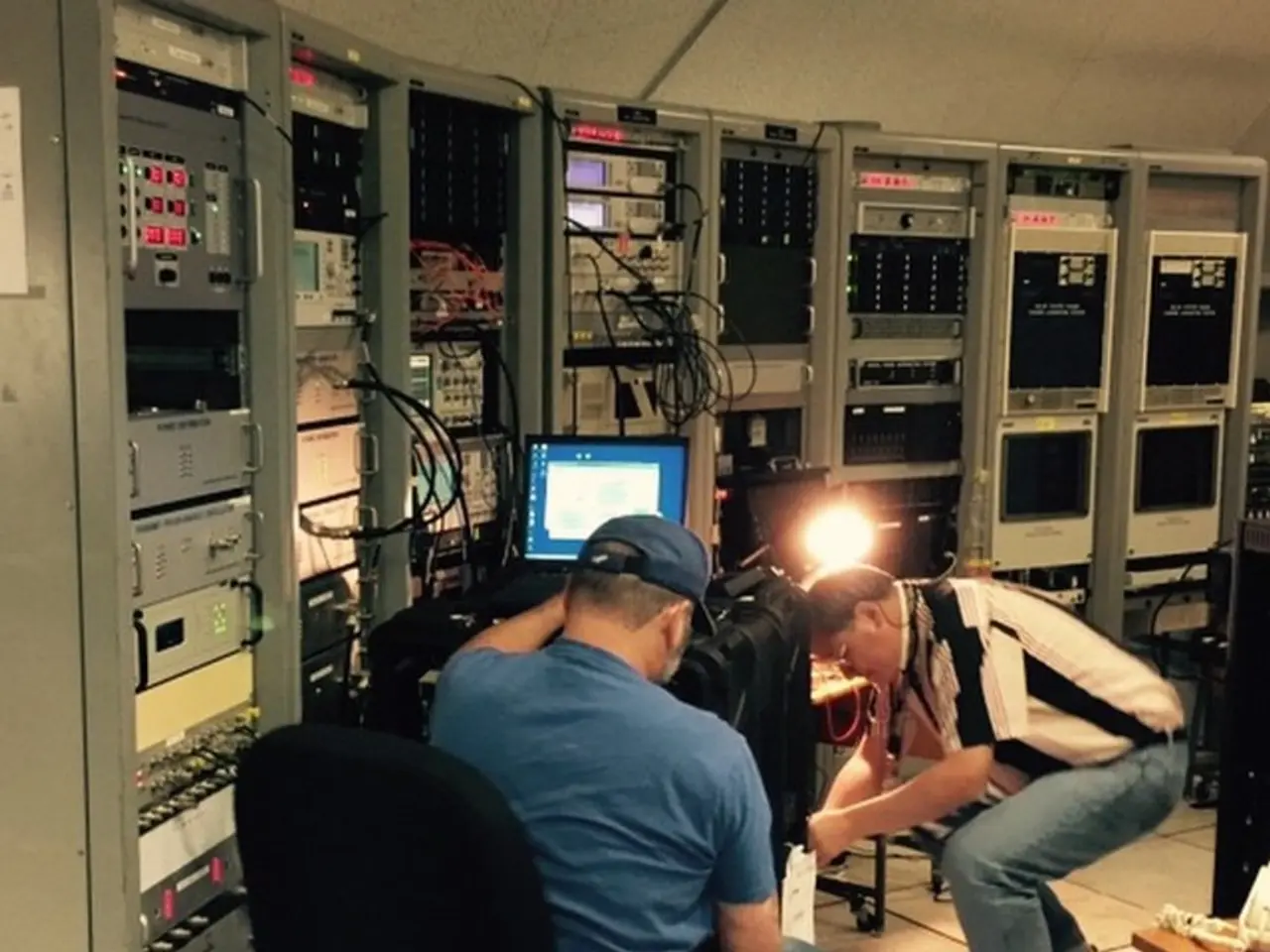Amidst company-wide layoffs, Google staff members are being encouraged to share desk spaces.
Google Introduces Desk-Sharing Workspace Policy for Cloud Unit Employees
Google's cloud unit has unveiled a new desk-sharing workspace plan, dubbed "Cloud Office Evolution" or "CLOE." This innovative policy aims to blend the advantages of pre-pandemic collaboration with the flexibility of hybrid work [1].
Under the new plan, employees will agree on a basic desk setup through a matching process, and desks will not be permanently assigned. Instead, they will be shared, allowing for more desks to be available than employees [2]. This desk-sharing model is aimed at increasing "real estate efficiency" [3].
Google's cloud unit is implementing this desk-sharing workspace in its five largest US locations: Kirkland in Washington, New York City, San Francisco, Seattle, and Sunnyvale in California [6]. Employees are encouraged to rotate working days to use the available desks, and there will be "drop-in overflow space" for those who come in on an unassigned day [7].
The policy supports variable attendance, with many cloud workers not coming to the office regularly. This attendance pattern reduces the need for permanent desk assignments and may influence how teams collaborate in person, with more emphasis on digital collaboration tools designed for flexible access and asynchronous work rather than fixed in-office presence [4].
Google carried out surveys with cloud employees to explore various hybrid work models and create the best experience [8]. The company used internal data collected from its employee office return patterns to develop the "Cloud Office Evolution" plan [9].
This move by Google's cloud unit is part of an effort to downsize its real estate footprint and cut costs [10]. However, some employees may vacate buildings as a result of the desk-sharing model [5].
Google has not specified which regions or buildings it will downsize, but it has cut back on hiring after laying off about 11,000 workers in January [11]. The "Cloud Office Evolution" plan is not a temporary development, but aims to lead to more efficient use of Google's space [3].
For more details, you can refer to the CNBC and Business Insider news articles about this development.
[1] Google Workspace enables distributed collaboration [2] Google's cloud unit to implement desk-sharing workspace [3] Google's cloud unit aims for efficient use of space [4] Tech companies and the future of hybrid work [5] Google to cut back on hiring and downsize real estate [6] Google's cloud unit to implement desk-sharing workspace in five US locations [7] Google's desk-sharing workspace policy: what employees need to know [8] Google surveys employees to explore hybrid work models [9] Google uses internal data to develop "Cloud Office Evolution" plan [10] Google's cloud unit aims to downsize real estate footprint [11] Google lays off about 11,000 workers in January
In the context of Google's new desk-sharing workspace plan, the company is aiming to utilize digital collaboration tools more, as the strategy places emphasis on flexible access and asynchronous work due to the reduced need for permanent desk assignments (Tech companies and the future of hybrid work). Furthermore, the implementation of this desk-sharing model is part of Google's efforts to downsize its real estate footprint and cut costs (Google's cloud unit aims to downsize real estate footprint).




